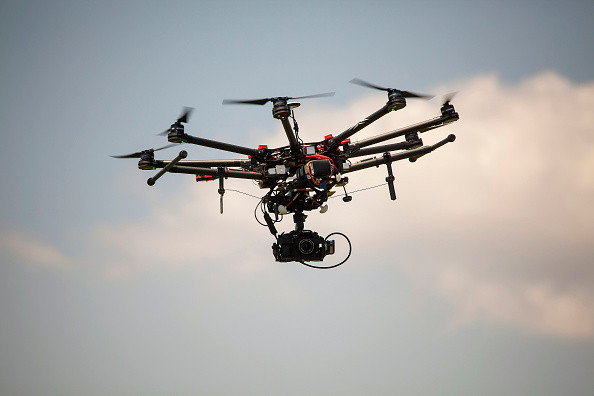Drone interception systems are being tested by US police and government agencies

Police and government agencies are developing and testing systems for taking control of consumer drones and flying them back to their owners. The aim of the system is to stop drones flying near vulnerable sites and has been in development for at least eight months.
A test was carried out in New York's Times Square on New Year's Eve 2014. Working with government agencies, US police used a microwave-based system to try and track a commercially available drone, then take control of its flight controls and send it back to its operator.
Interest in creating such a system has surged alongside sales of cheaply available drones which are easy to fly and have flown close to commercial airlines during take-off and landing. There is also a concern that drones could be used as weapons, either by carrying dangerous payloads, or even by having handguns strapped to them.
The Times Square test failed, according to a source involved, because of interference from nearby media broadcasts, Reuters reports. But this will be merely one of many hurdles police and government agencies will be keen to overcome to take control of the skies. The Department of Homeland Security said it "works side-by-side with our interagency partners" to create solutions to stop unlawful drone use.
Not only have drones been spotted flying dangerously close to airliners, but they have also been used to transport drugs into prisons, disrupt aerial firefighting efforts, and even cause a security scare at the White House. Drones have been equally troublesome in the UK and Europe, with several near-misses being reported at Heathrow airport and multiple sightings of drones flying suspiciously around French nuclear power plants.
In the UK, commercial drones – like the popular DJI Phantom and Parrot AR Drone – cannot be flown within 50m of buildings, roads and people not under control of the pilot. They also cannot be flown out of sight, despite first-person cameras and headsets being sold to facilitate this. Drones cannot be flown near airports or any of the UK's Royal Parks; London's Canary Wharf business district is also a no-fly zone.

DJI Phantom drones use GPS to alert the pilot if they are flying in restricted airspace, and they will automatically land if they get too close to airports. However, cheaper or homemade drones do not have such a feature, and neither do remote control planes and helicopters; the latter came within 6m of a plane landing at Heathrow Airport in 2014.
More than 650 drone sightings were reported by US pilots in the first eight months of 2015, more than double the 238 sightings reported in the whole of 2014. But not all commercial pilots are fearful of drones. Chris Manno, a former US Air Force pilot who is now a captain for American Airlines, published a blog post which blames some media outlets for using drone sightings and the threat they pose to aircraft as a form of fearmongering. Manno explains how bird strikes happen "hundreds" of times each year, but because they rarely cause damage they are no longer considered newsworthy.
"What's new is the opportunity for media and aviation 'pundits' to claim more screaming headlines by overstating the drone hazard...although the media and some wannabe aviation pundits claim there are 'drones of 50-60 pounds,' the fact is, the new, popular hobbyist drones are marvels of lightweight miniaturisation, weighing a fraction of that." Popular drones, like the Phantom range by DJI, weigh around 1.2kg (2.6 pounds).
More than a million drones are expected to be sold in the US this year, up from 430,000 in 2014 and 120,000 in 2013. Analysis of Federal Aviation Administration data carried out by Reuters found only 10% of pilots were identified in instances of unauthorised drone sightings, and just 2% of these cases led to enforcement actions. "We can't shoot it out of the sky. We have to come up with something that's kind of basic technology so that if something happens, the drone or device will just go right back to the operators. It won't crash," a source told the new agency.
© Copyright IBTimes 2025. All rights reserved.






















